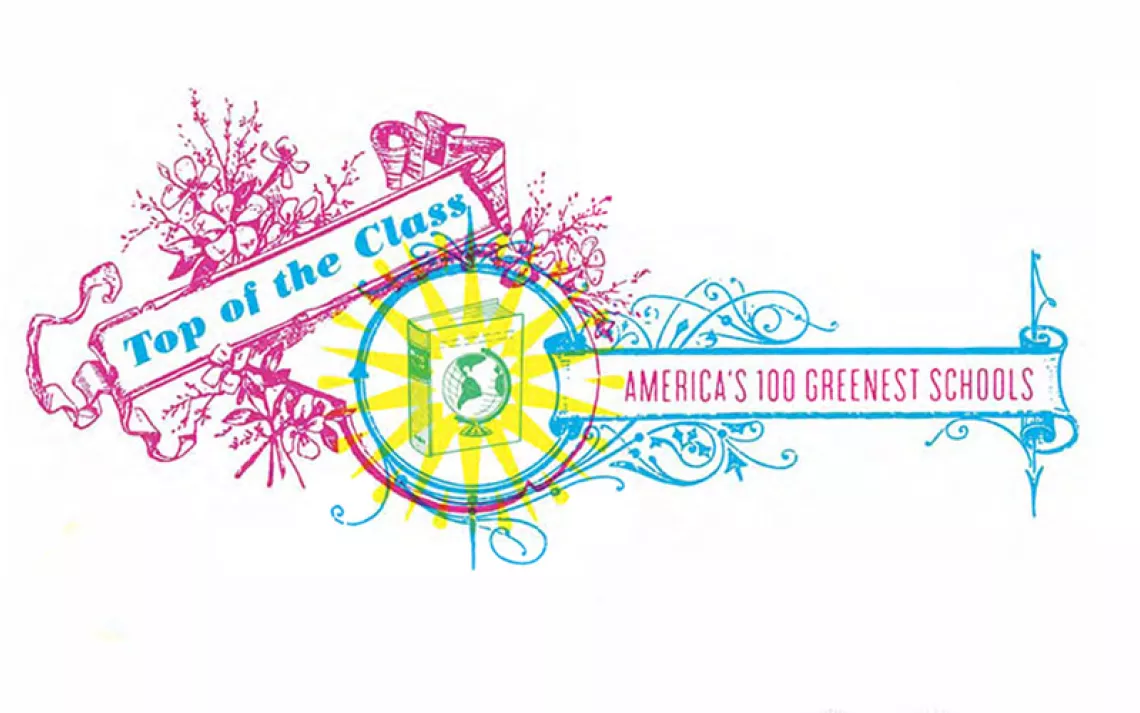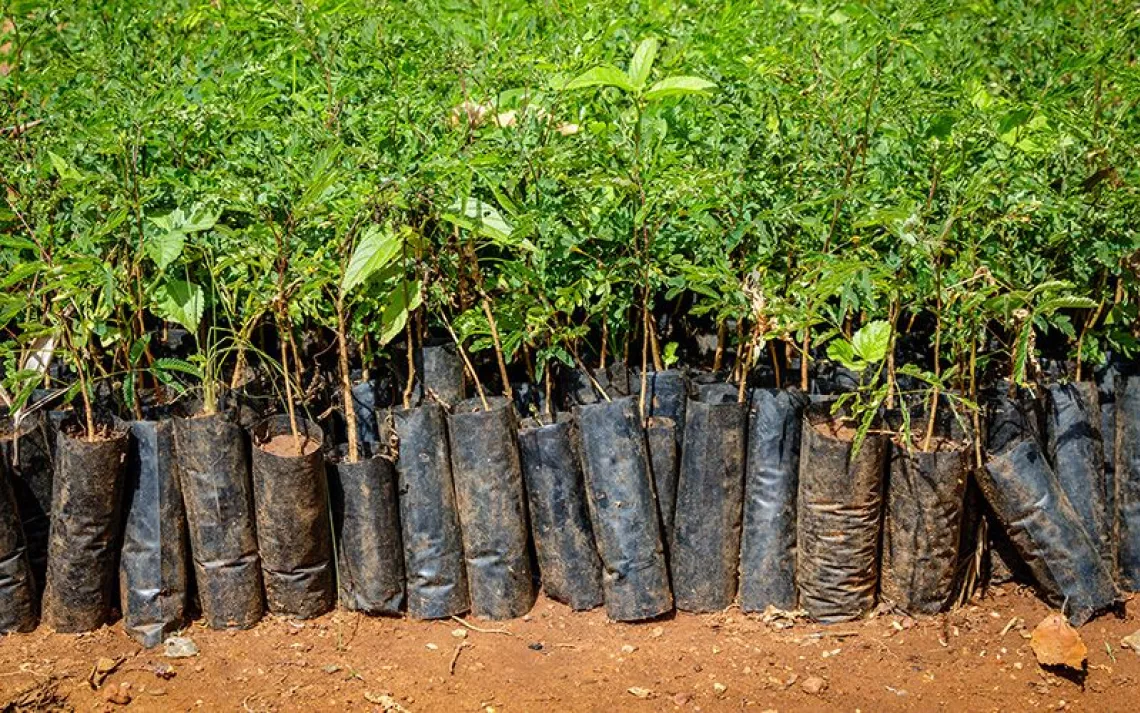How 4-H Clubs Prep Youths for Today’s Eco Challenges
Once meant for farmers in training, 4-H is now a STEM tour de force

Photos courtesy of 4-H
Amelia Day, 18, of Fort Valley, Georgia, founded Veteran Smiles—a community service initiative to deliver cards and care packages to veterans—when she was 13. Florida high school student Hunter Williams recently developed a system that connected farms that had surplus crops and fresh meat with consumers in need, and Joseph Huff of Utah led 4-Hers to develop prosthetic hands for youths using 3D printing technology—which he then used to create printed masks for first responders during COVID. All four students were able to pursue these passion projects because they belonged to a 4-H club.
Originally formed in the early 1900s, 4-H was designed to introduce new agriculture technology to rural youths in US farming communities. Today, that signature 4-H shamrock is reaching far beyond livestock and agricultural management; it’s come to represent youths who are tackling major climate, mental health, and science-based issues. The organization now counts 6.5 million members in 90,000 clubs and has evolved along with farmers, many of whom use highly sophisticated precision agriculture and land management technology. Accordingly, contemporary 4-H clubs—typically organized within a school or neighborhood—delve into challenges surrounding climate change, food safety, global food security, sustainable living, and even robotics and coding.
“Whether you're talking back in the 1970s or today in the 2020s, our mission is still positive youth development. How we do that is through our various projects and activities,” says Kevin Allen, 4-H assistant director for Oklahoma Cooperative Extension Service. (The club’s original motto was "Learning by doing.") “We still have a strong agricultural component, but we're also reaching out into the sciences, technology, engineering, and math,” adds Allen, who notes that Oklahoma 4-H started incorporating STEM fields in 2002. “We’re relating that back to important topics like water or natural resources in agriculture and animal science, which are still a large part of what we do."
Programming is different in every state, depending on its agricultural legacy and practices. In Oklahoma, where water issues and land use deeply affect crops and cattle, 4-H has evolved to provide education in areas from global food security and sustainable energy to water conservation and childhood obesity. State 4-H youth leader Steve Beck says the club’s focus is providing research-based education to youths, to help them compete in key scientific fields. “In 2002, Oklahoma 4-H hired a 4-H STEM specialist to lead this charge,” he says. “The National 4-H Council has also been a strong advocate for STEM by promoting an annual 4-H STEM Challenge since 2008.” In 2020, for instance, “Mars Base Camp” saw 300,000 eight- to 14-year-olds embark on a simulated journey to the red planet involving mechanical engineering, physics, computer science, and agriculture.
Since 2010, when aerospace company Lockheed Martin partnered with National 4H Council to develop the 4H Robotics and the 4H National Youth Science Day initiative, even robotics has become a major program initiative for 4-H. From that initiative, more than 450 robotics clubs have connected 1.8 million youths across the nation to STEM.

World problems for world leaders
Nationally, 4-H clubs were developed through a partnership between the United States Department of Agriculture, the National Institute of Food and Agriculture, and land-grant universities of all 50 states. The original idea was to make public school education more relevant to rural life. (Interestingly, researchers at land-grant universities and the USDA felt that adults in the farming community didn’t readily accept new agricultural discoveries, whereas youths were open to experimentation and likely to share their experiences and successes with adults in their communities.)
Some things haven’t changed. But despite the political charge behind a variety of environmental issues, 4-H has steadily evolved to incorporate them, with youths now learning about the importance of matters like clean air and water, crop rotations, and how to use robotics for land management.
Oklahoma 4-H, which has clubs in all 77 counties in the state, spotlights better use of and conservation of water through an annual, 2015-born program called Oklahoma 4H2O. It includes a “Water Fair” at local elementary and middle schools that devotes attention to topics like clean groundwater, how water becomes polluted, the four steps in a water cycle, and the role of grasses and grass zones in keeping water sources healthy. Teachers in participating schools receive a resource kit with lesson plans, and students get a Water Fair Student Activity Book that includes lessons and reviews information they learned at the Water Fair.
“It goes back to our extension initiatives in 2015, where water was identified as one of our critical areas that we needed to provide attention to,” says Allen. “Presenting the critical need of water in a youth perspective fits the overall mission in the state.” Various activities include lessons like “Awesome Aquifers,” which teaches the concept of an aquifer to students, who then create their own edible aquifer to learn about how wells affect groundwater. The “Web of Conservation” is devoted to reducing water use inside the home and teaching how water is wasted outside the home.
Hard sciences are also a focus for today’s 4-H clubs, says Alex Cox, extension program specialist with OSU’s 4-H Youth Development. When the need to increase STEM among youths was identified in America in the mid-2000s, 4-H designed a comprehensive system in 2008 to engage 1 million new youths in 4-H Science by the end of 2013.
Nationally, 4-H put on five 4-H National Youth Science Days from 2008 to 2012, in an effort to lure students into the fun of STEM. Many activities focused on scientific concepts like alternative energy, water conservation, and engineering a robot to address environmental issues. According to the "4-H Science Initiative From Inception to Impact: Methodologies, Lessons Learned, Best Practices and Recommendations” report released in 2013, activities were conducted in thousands of communities across America and in other countries.
“Eighty percent of the jobs in the next generation are going to be science-based and STEM-based skills that kids need. Being able to get those kids into an industry that they might not know of or that they didn't know sparked their interest is something that I like to do,” Cox says. “We’ve touched on some water and environmental science stuff, but in the past three years we’ve started looking at the flip sides, such as coding and robotics.”

Green goes global
The 4-H Ag Innovators Experience challenges youths to apply critical thinking and STEM skills to address a real-world agriculture challenge. Wyatt Nikodyn, a 17-year-old member of the Oklahoma 4-H club, decided to focus on water. During the 2020 pandemic, he and fellow students shared National 4-H’s “Water Connects Us All'' programming about water conservation and water pollution with a global audience, including 4-H volunteer team leaders in Africa’s Republic of Congo.
“Through Zoom, we were able to talk to and teach some workshops to people in the Republic of Congo about water and rain gardens,” says Nikodyn. “We talked about where to put a rain garden, how to create one, how to reduce polluted runoff, et cetera—we were able to all jam together and talk about water.”
Because of his participation in 4-H and his interest in water-related issues, Nikodyn says he will pursue zoology, biology, or marine biology after graduation. He also qualified for several 4-H college scholarships, which are open to youth members. “Again, that comes back to teaching youths to use critical thinking skills to help solve problems,” Allen notes.
The 4-H programs pay off. According to the national 4-H, the organization’s 6.5 million US members are four times more likely to contribute to their communities, twice as likely to participate in STEM programs, and twice as likely to be civically active. “These kids are growing up in a world where technology is always changing,” says Alex Cox. “4-H tries to give them the skills to keep up with that and help make a better world for everyone.” Indeed, as society continues to find ways to mitigate and address global climate issues and land conservation, those skills will become more and more vital to the health of the planet.
 The Magazine of The Sierra Club
The Magazine of The Sierra Club



